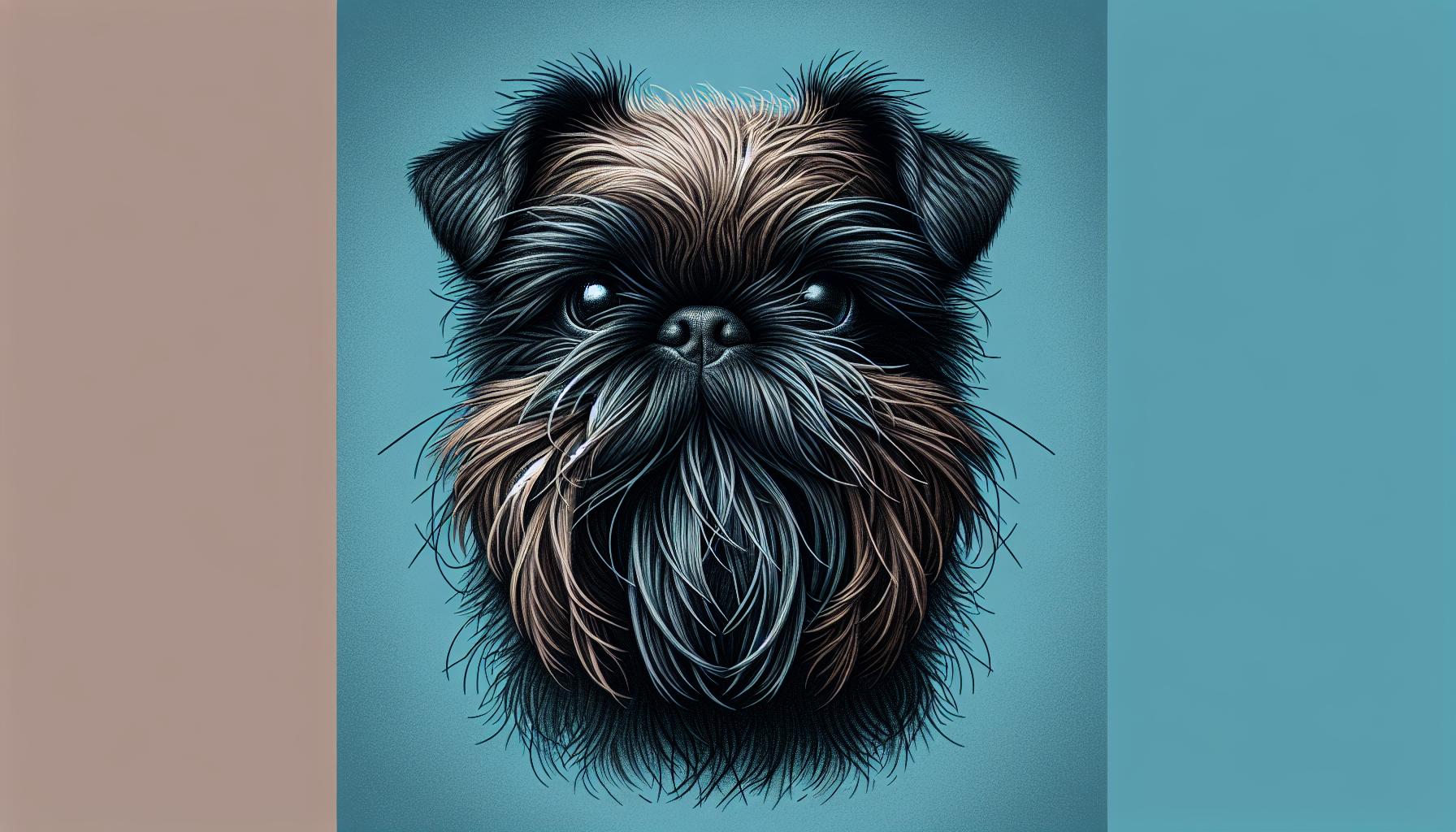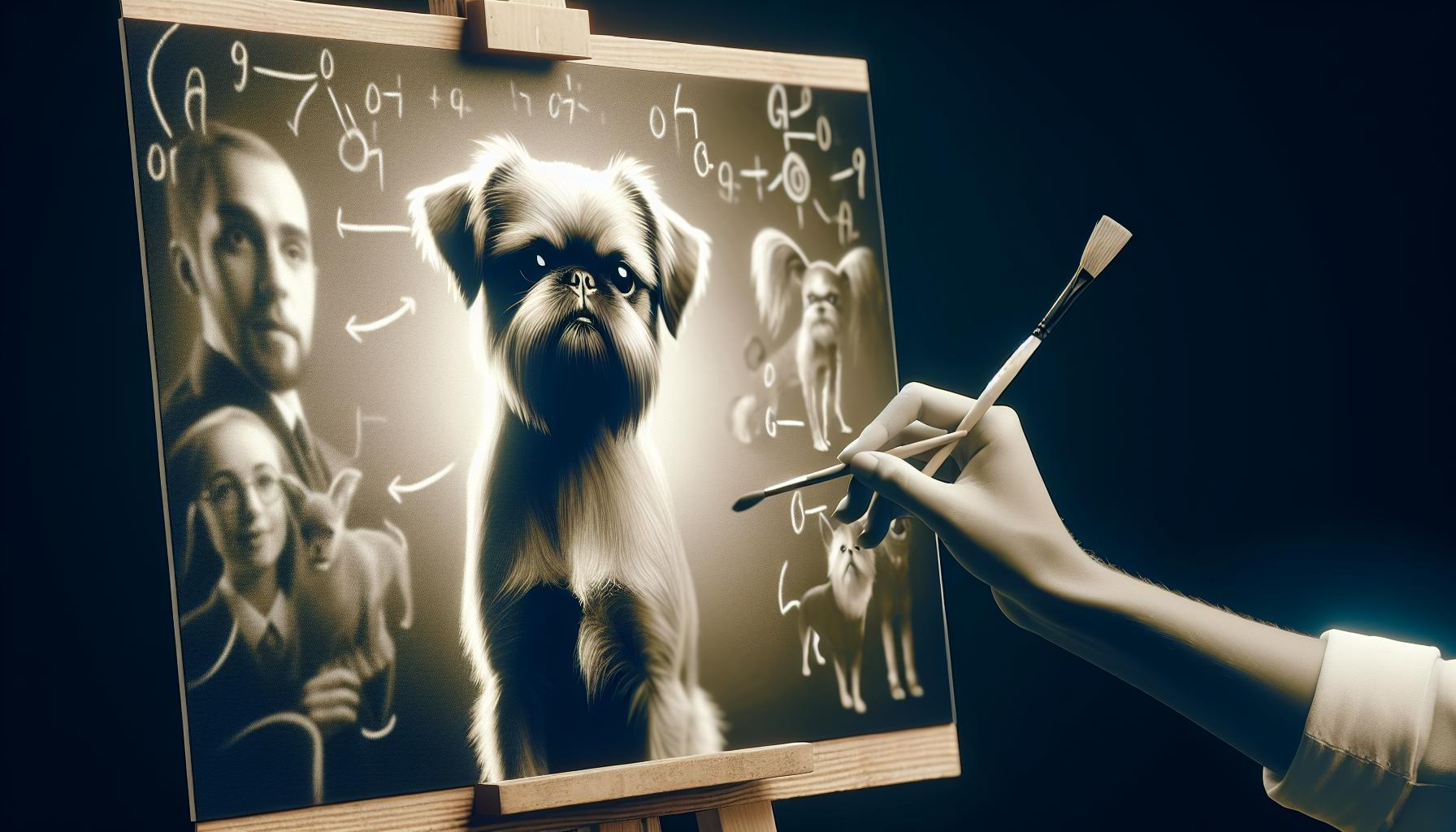If you’re diving into the world of Brussels Griffons, prepare to meet one of the most charismatic companions in the dog world. With their distinct face and expressive eyes, it’s easy to see why they capture hearts. But what makes a Brussels Griffon stand out, according to breed standards?
Understanding breed standards isn’t just for show dogs; it’s about knowing what makes your Griffy tick. From their unique head shape to their confident strut, each detail plays a part in their charm. Let’s explore what sets these pint-sized dynamos apart and why adhering to these standards is crucial for their health and happiness.
Origins of the Brussels Griffon Breed
Diving into the origins of the Brussels Griffon, you’re whisked back to 19th-century Belgium. This breed didn’t just emerge out of thin air; it was carefully cultivated in the bustling city of Brussels. Initially, these dogs were bred from a mix of the Pug, the King Charles Spaniel, and the Affenpinscher. The goal was to create a small, sturdy companion dog with a heart of gold and a face full of character.
Back then, the Brussels Griffon wasn’t living the lap of luxury as they often do today. Instead, they earned their keep as ratters in the stables of Brussels. Their compact size and agile bodies made them perfect for the task, chasing down pesky rodents that threatened the city’s horses and carriages. However, it wasn’t long before their charming personalities caught the eye of the Belgian nobility.
The transformation from a working-class hero to a noble companion was rapid. By the late 1800s, the Brussels Griffon had found favor with the Belgian royalty and elite, marking a turning point in the breed’s history. This notable shift wasn’t just about a change in lifestyle for these pups; it significantly influenced the breed’s development. Breeders began to emphasize the unique physical and temperamental traits that make the Brussels Griffon stand out today.
As their popularity grew, Belgians weren’t the only ones captivated by these tiny canines. The Brussels Griffon started to gain international recognition, enchanting dog enthusiasts across Europe and eventually making their way across the Atlantic. This journey from the cobblestone streets of Brussels to the homes and hearts of people around the world is a testament to their enduring appeal.
Physical Characteristics as per Breed Standards

When you’re considering adding a Brussels Griffon to your family, understanding their breed standards, especially regarding physical characteristics, is crucial. These small, square-proportioned dogs are known for their distinctive, human-like expressions, a trait that sets them apart.
Firstly, weight and height are key factors. The Brussels Griffon typically weighs between 6 to 12 pounds and stands about 7 to 10 inches tall at the shoulder. Despite their diminutive size, they carry themselves with a notable air of self-importance.
Their coat comes in two varieties: rough and smooth. The rough-coated Griffon boasts a wiry, dense coat with a distinctive beard and mustache, contributing to that characteristic expressive face. On the other hand, the smooth coat is short and glossy, offering a sleeker appearance but with the same keen expression.
| Coat Type | Texture | Maintenance Level |
|---|---|---|
| Rough | Wiry, dense | High |
| Smooth | Short, glossy | Moderate |
As for color, Brussels Griffons can be found in various shades, including red, black and tan, or black. Their eyes are large and dark, further accentuating their almost human-like expressions. Their ears can be either cropped to stand erect or left natural, hanging close to their head, depending on the owner’s preference and the standards of their home country.
Their tail is typically docked to about one-third of its length, although this practice varies by region and is subject to personal and regulatory considerations.
Understanding these breed standards not only helps in recognizing a well-bred Brussels Griffon but also prepares you for the grooming and care specific to their needs. Whether you’re drawn to the rough or smooth, each Griffon is a masterpiece of unique expressions and delightful proportions.
Temperament and Personality Traits to Look For

When considering bringing a Brussels Griffon into your home, understanding their temperament is just as critical as knowing about their physical characteristics. Known for their bold and curious nature, these small dogs pack a lot of personalities. Although they might be petite in size, their confidence and self-assurance are anything but small.
Brussels Griffons thrive on human companionship, often following their favorite person from room to room. They have a strong desire to be involved in all family activities, making them excellent companions but also prone to separation anxiety if left alone for too long. Hence, they’re best suited for homes where they won’t spend much time by themselves.
This breed is intelligent and eager to please, which makes training a rewarding experience. However, their strong will and sometimes stubborn streak mean you’ll need patience and consistent positive reinforcement techniques. Despite these challenges, the joy of training a Brussels Griffon lies in their playful responses and quick learning ability.
Socialization is key for a well-adjusted Griffon. Exposure to different people, sights, sounds, and experiences at a young age helps them become well-rounded dogs. While they are generally good with other pets and children, their small size makes it important to supervise interactions. Introducing pets and children gently and calmly can foster a harmonious relationship.
Their watchdog capabilities should not be underestimated. Brussels Griffons are alert and can be quite vocal, notifying their families of anything unusual. While this makes them excellent watchdogs, potential owners should be ready to manage excessive barking through training and socialization.
Remember, every Brussels Griffon has a unique personality. Spending time together will help you understand your dog’s specific traits and preferences, further strengthening your bond.
Grooming and Maintenance Guidelines

When it comes to keeping your Brussels Griffon looking their best, regular grooming is key. Two coat types – rough and smooth – bring slightly different care requirements to the table, but both need your attention to stay healthy and happy.
For the rough-coated variety, brushing a few times a week with a quality pin brush will keep their distinctive beard and whiskers free of tangles, and prevent matting in their body coat. This coat type doesn’t shed much, but it requires hand-stripping or professional grooming a few times a year to remove dead hair and maintain the coat’s texture.
On the other hand, smooth-coated Griffons have a shorter coat that’s easier to care for. A quick brush once a week with a soft bristle brush should keep their coat shiny and remove dead hair, as this type sheds more than the rough. Regardless of the coat type, you should bathe your Griffon only as needed – too much bathing can strip their skin of natural oils, leading to dryness and irritation.
Don’t forget about dental hygiene and nail care. Brushing your Griffon’s teeth at least two or three times a week is essential for preventing dental disease. As for their nails, trimming them once or twice a month is usually enough to keep them from growing too long, which can cause discomfort or even problems walking.
And remember, grooming isn’t just about keeping your Griffon looking good. It’s also a great way to bond with your pet and check them for any signs of health issues, like skin problems or unusual lumps. So, while it may seem like a chore at times, think of grooming as an investment in your Griffon’s health and happiness.
Importance of Breed Standards for Brussels Griffons

When you’re considering bringing a Brussels Griffon into your life, understanding the breed standards is crucial. These standards are much more than a blueprint for how these charming dogs should look; they serve as a guide for health, temperament, and behavior, ensuring that the Brussels Griffon you welcome into your home is a joy to live with.
First and foremost, breed standards help in maintaining the genetic health of the breed. Adhering to these standards minimizes the risk of hereditary diseases, common in dogs bred without regard for health and conformation to breed characteristics. This means you’re likely to have a healthier, happier companion when you choose a dog that meets these criteria.
Another key aspect is the preservation of the breed’s unique characteristics. The Brussels Griffon is known for its expressive face, compact body, and cheerful disposition. These traits have captivated dog lovers for generations, and upholding the breed standards ensures these distinctive features remain for future enthusiasts to enjoy.
Moreover, understanding breed standards is invaluable for training and socialization. Knowing what’s typical behavior for a Brussels Griffon can help you tailor your training methods to your dog’s natural instincts and tendencies. This not only makes for a smoother training process but also strengthens the bond between you and your dog.
Whether you’re looking to show your Brussels Griffon or simply want a well-mannered pet, familiarity with the breed standards can make all the difference. It’s not just about having a dog that looks a certain way but nurturing a canine companion whose health, temperament, and appearance align with the best qualities of the breed.
Conclusion
Getting to know the breed standards for Brussels Griffons is more than just about keeping up appearances. It’s about ensuring your furry friend leads a healthy, happy life that’s true to their nature. By embracing these guidelines, you’re not just choosing a pet; you’re welcoming a companion whose wellbeing, temperament, and unique personality traits have been thoughtfully considered. So whether you’re aiming for the show ring or simply looking for a loyal friend, understanding these standards is your first step toward a rewarding journey with your Brussels Griffon. Remember, a well-informed owner makes for a happy, healthy dog.
